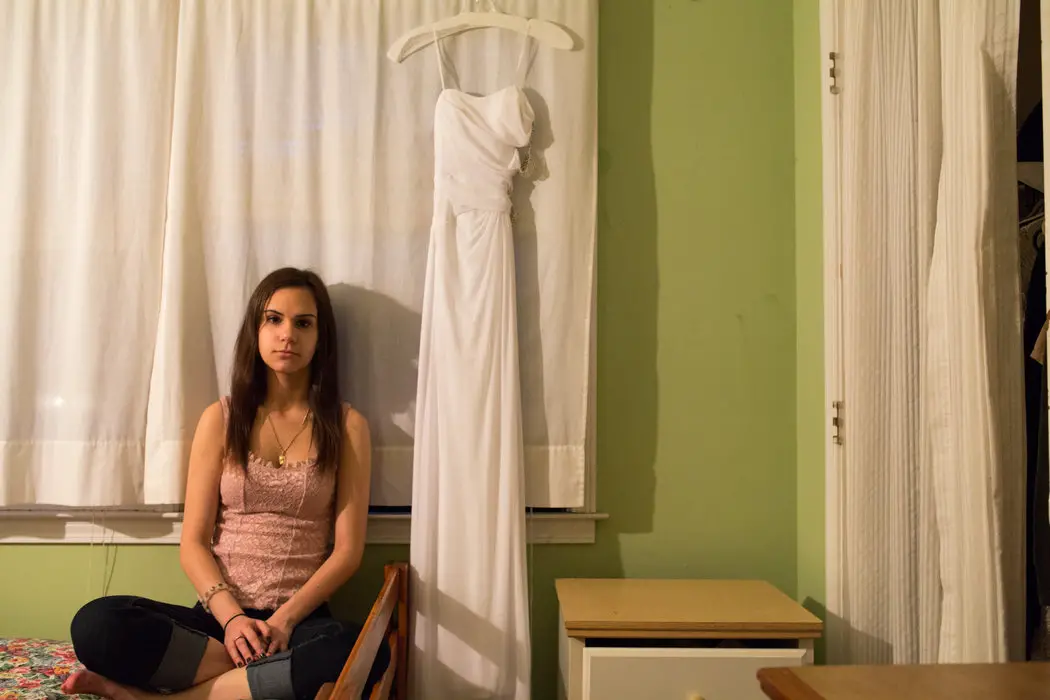Behind maybe election season, prom is one of the biggest social media events of the year.
But unlike election season, this bacchanalia of new profile pictures and viral promposals doesn’t just roll around every four years. Every March through June, everyone and their mother—or at least that one friend’s mom who comments on every picture—flocks to social media to see the weirdest new dress trends and take bets on who will be that guy and show up in a powder blue tux.
It’s an amazing time of year to be on social media. There are entire anonymous Twitter accounts devoted to making sure no two girls show up to prom in the same dress. People do extravagant things in the name of promposals, because if it’s not Insta-worthy, you significantly reduce your chances of cashing in on some post-prom (or mid-prom) car sex. Teenagers ask celebrities to prom. Sometimes those celebrities say yes. I honestly don’t really understand what prom was before social media. It’s truly a magical night to never look up from your phone.
Of course, with any social-media frenzy comes controversy, and along with special celebrity guest stars and socially just formalwear, prom season would be incomplete without an annual dress code firestorm.
#SCPGoodGirl
Stanton College Prep in Jacksonville, Florida, stole the spotlight early on this year when a viral tweet about its rigid prom dress code attracted nationwide media attention back in March. The dress code, which prohibits backless, low-cut and two-piece gowns, as well any gowns featuring slits or cut-outs, was promulgated with a series of fliers posted throughout the school. The fliers featured photographs of prom dresses under the heading, “Going to Stanton Prom?” Dresses that fell outside the school’s dress code carried the caption “No you’re not,” while the one acceptable image was infamously captioned, “Yes you are. Good girl.”
Naturally, the incident sparked significant feminist backlash, with students and incensed Twitter users alike slamming the school with allegations of misogyny and body-shaming. Reached for comment by “The New York Times,” Amie Hess, sociology professor at Meredith College in North Carolina, wrote that the dress code “suggests that young women’s bodies are objects to be consumed by men, and that it is up to women to police the behavior of men.”
The Right to Bare Arms
This kind of feminist reaction against dress codes is nothing new. Since the hallmark bra-burning of the second wave, regulations on female attire in schools and the workplace have sparked controversy, and social media has only fed the fire. The reactionary efforts typically recall rhetoric similar to Hess’, relying on a widespread notion that dress code enforcement reflects administrative efforts to avoid “distracting” male students and coworkers.
This idea has become such a cornerstone of the feminist plight that it is impossible to tell whether the problematic “women as distractions” rhetoric is actually being used by administrators to enforce dress codes, or whether these so-called sexist undertones simply endure within the movement itself to fan the reactionary flames.
While the Stanton Prep dress code was particularly rigid, and its delivery was undeniably inappropriate, it was one of few dress code controversies to actually espouse explicitly sexist rhetoric. Nevertheless, the war on dress codes remains in full social media swing, with feminists young and old taking to Twitter to fight for their right to bare arms (and shoulders.)
The controversy doesn’t end with prom, either. As soon as the warm weather rolls in, so does the heat from enraged feminists from middle school up. Every year, the same tired trends resurface, and mandatory one-inch tank-top straps give birth to a whole new generation of feminist martyrs. Every time someone retweets a picture of a girl in spaghetti straps holding a sign about how not being allowed to show her shoulders makes her a unique victim of the patriarchy, a feminist gets its wings.
Take, for example, Molly Neuner, the “badass sixth-grader” who “broke her sexist middle school dress code on purpose to invoke change.” Molly, scolded for wearing a tank top to school, took a brave stance by “wearing another, different tank top” and writing “#IAmNotADistraction” down her forearm in Sharpie. Surely this is the kind of dauntless heroism the feminist movement needs.
Dress Codes by the Patriarchy, for the Patriarchy?
Notably absent from these conversations? Any mention of male dress codes. That’s right, believe it or not, men too are held to standards of dress that vary depending on setting, age, event, venue and a variety of other factors. And while feminist ideology maintains that females are held to more rigid standards of dress than men, that isn’t necessarily true.

In fact, if the dress code debate is boiled down to a measure of who gets to show more skin, in most cases, women are the winners. For example, in most formal settings, women are permitted to wear dresses or gowns that allow for some display of skin, regardless of how rigid the restrictions may be. Men, meanwhile, are condemned to spending the night fully covered from the neck down in a complete ensemble of pants, shirt, tie and jacket.
The point here is that while women’s dress codes may very well include a greater number of restrictions, they are not necessarily more restrictive. The differences in men’s and women’s dress codes correspond to the general differences in men’s and women’s fashion, more so than to any hidden patriarchal agenda.
Because there are generally more possible variations in women’s attire than men’s for any given event, there are often more regulations in response to these variations. If open-back tuxes and suit jackets with side cutouts ever catch on in men’s fashion, I’m sure school dress codes will have something to say about it. Until then, women can rejoice in the freedom to choose from a wide variety of dress colors and styles, while men pretty much only get to pick which neutral they want their tux in.
The Gender Binary Killed the Sexism Star
So obviously it’s super woke and #empowering to view dress codes from a feminist perspective as an attack on women that reaffirms a narrative in which the female body is viewed as inherently sexual. Except that it’s boring, heavy-handed and depends on a “problematic ideology” that is promoted almost entirely within the feminist community itself.
Besides, the real issue here isn’t even that dress codes are potentially sexist; it’s that dress codes correspond to a gender binary at all. Really? It’s 2017 and dress codes are still restricted to male and female categories only?
Forget feminism, subverting the gender binary is the new thing all the cool kids are doing.

















